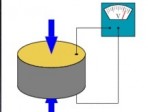 00:03:00
00:03:00
Piezoelectricity
Some minerals such as quartz can produce electricity simply by squeezing or bending them - these are called piezoelectric crystals. Here is a simple and cheap demonstration you can do.
More details | Watch now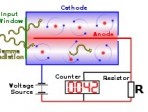 00:02:00
00:02:00
The Geiger Counter
Although essentially a very simple device the Gieger Counter is an exquisitely sensitive detector of ionising radiation. It can detect a single particle. Here we demonstrate its use in detecting radiation from minerals and describe in simple terms ho....
More details | Watch now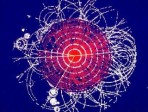 00:08:00
00:08:00
The Quest for The Higgs Particle
A Breathtaking Journey into the Innermost Structure of our Universe. Runner up: Best use of Animation and Best Short Documentary for the 2002 International Festival of Cinema and Technology.
More details | Watch now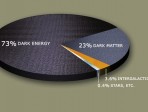 00:03:00
00:03:00
The Mystery of the Missing Mass
Dr Tara Shears explains why scientists are convinced that Dark Matter exists and how a new experiment called the Large Hadron Collider might finally tell us exactly what this mysterious missing mass is made of.
More details | Watch now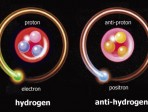 00:03:00
00:03:00
The Matter with AntiMatter
If equal amounts of matter and anitmatter were created at the birth of the universe then why does our universe seem to be made almost entirely from matter? Dr Tara Shears tells us how this mystery could be explained by the Large Hadron Collider exper....
More details | Watch now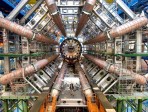 00:04:00
00:04:00
Big Bang – a tour of the Large Hadron Collider
Dr Brian Cox takes us on a tour of the Large Hadron Collider where the conditions moments after the Big Bang are to be recreated.
More details | Watch now 00:04:00
00:04:00
Sizing Things Up
Dr Tara Shears explains that one of Science's greatest achievements is to have accurately measured everything from the width of the universe to the diameter of a quark. This film features an animated zoom in from the universe to the heart of a hydrog....
More details | Watch now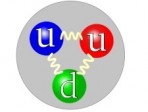 00:14:00
00:14:00
The Building Blocks of Matter
The Large Hadron Collider at CERN is the biggest science experiment ever built. Scientists from all over the world are heading to CERN with the aim of recreating particles from the beginning of the universe. Dr Brian Cox takes us on a scientific jour....
More details | Watch now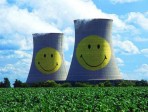 01:00:00
01:00:00
Nuclear Power Plant Safety – What’s the Problem?
A significant proportion of our electricity is generated by thermonuclear reactions. The dangers attached to these processes and the radioactive products are well known and publicised. Much less well known are the measures taken to ensure that the hi....
More details | Watch now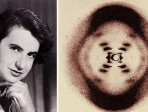 00:57:00
00:57:00
How X-rays cracked the structure of DNA
An elegantly simple optical diffraction demonstration with an inexpensive laser pointer is used to show the way in which x-rays can reveal the structure of crystals, and in particular, the double helix structure of DNA.
More details | Watch now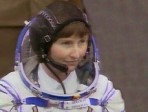 00:29:00
00:29:00
Life in Space
Helen Sharman, the UK's first astronaut, gives a vibrant account of her personal experience of life in space using models and film to illustrate the key scientific concepts involved in spaceflight. Among other things she discusses the way Newton's Th....
More details | Watch now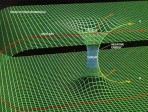 00:29:00
00:29:00
The Theory of Everything
Are we on the verge of that holy grail of science, a single theory that explains everything from planets to atomic particles, and if we ever get there, will it be the end, or the beginning of physics? Physicists have theories covering everything fr....
More details | Watch now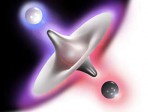 00:29:00
00:29:00
Antimatter
What is antimatter? What does it tell us about the structure of our universe? Can we ever detect it?
More details | Watch now 00:29:00
00:29:00
Mobile Phones – Safe?
A presentation discussing the science of mobile phones and associated radiation. Are mobile phones safe?
More details | Watch now 00:02:00
00:02:00
Millie Dresselhaus
Mildred Dresselhaus was born in Brooklyn, New York and grew up in a poor section of the Bronx. She was a Fullbright Fellow at the Cavendish Laboratory, Cambridge University (UK) in 1951-52 and obtained a PhD at the University of Chicago in 1958. Mill....
More details | Watch now 00:13:00
00:13:00
Cosmic X-ray sources
Riccardo Giacconi , USA was awarded half of the Nobel Prize for Physics in 2002 for 'for pioneering contributions to astrophysics, which have led to the discovery of cosmic X-ray sources.
More details | Watch now 00:15:00
00:15:00
Ivar Giaever
Ivar Giaever won the Nobel Prize in 1973 for his investigations of tunneling in semiconductors and superconductors. Giaever worked on metal thin films and tunneling and took a Solid State physics course. Although he knew nothing about Superconductivi....
More details | Watch now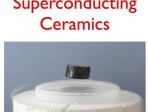 00:06:00
00:06:00
Alexander Müller
K. Alexander Müller shared the Nobel Prize for Physics with J. Georg Bednorz in 1987 'for their important break-through in the discovery of superconductivity in ceramic materials'. At the age of 9 Mller was given a radio (a single vacuum tube receiv....
More details | Watch now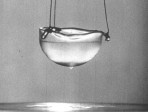 00:15:00
00:15:00
Superfluidity in Helium 3 – Nobel Physics Prize 1996
Together Osheroff and Richardson talk about their different scientific research backgrounds which leads a fascinating discussion on their joint work for the Noble Prize.
More details | Watch now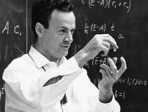 01:18:00
01:18:00
Richard Feynman – The Douglas Robb Memorial Lectures – Part 1
A gentle lead-in to the subject, Feynman starts by discussing photons and their properties.
More details | Watch now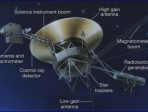 00:25:00
00:25:00
Communication with Space Probes and beyond
The main problems associated with communicating with distant space probes like Voyager 1 are investigated. The role played by diffraction in limiting the amount of power receivable on Earth is discussed. The further problems of reaching a nearby st....
More details | Watch now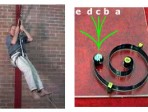 00:10:00
00:10:00
Newton’s laws of motion
F=ma (laws 1&2). Forces come in pairs that add to zero (3). Newton's laws apply in inertial frames of reference. Some common approximations made in applying them.
More details | Watch now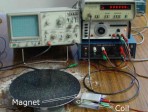 00:08:00
00:08:00
Simple harmonic motion
In simple harmonic motion, displacement, velocity and acceleration vary sinusoidally with time, but with different phases.
More details | Watch now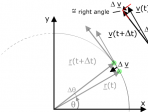 00:08:00
00:08:00
Circular motion
Uniform circular motion: angular displacement and velocity are introduced and centripetal acceleration is determined.
More details | Watch now
